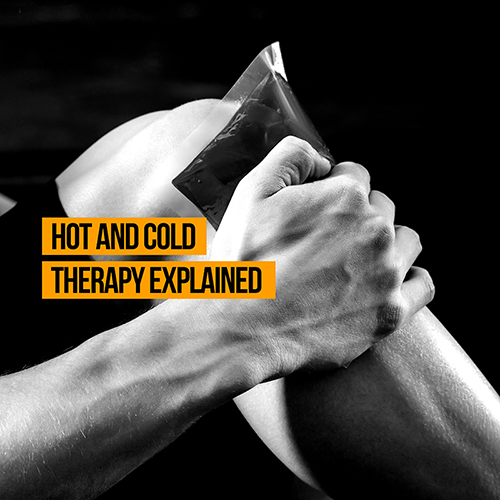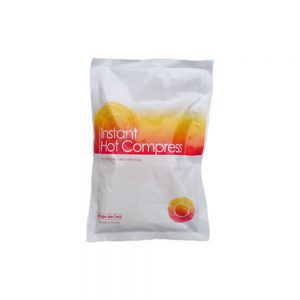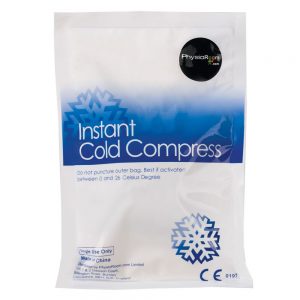Hot and Cold therapy are great ways of treating injuries, be it on the track, field, at home or even the office.
Whenever we pick up an injury, there’s always that initial impulsion to ice it down. While this might be the correct method with some injuries, it’s not always the way forward, or at least there might be some steps to take before you throw on the ice or heat or vice versa.
Knowing when and how to apply ice or heat and in which order can be confusing to the non-expert, so why not let us provide you with the best ways and methods of treating your injury!
Before we go a little more in depth, let’s get some basic rules out of the way:
- Generally we use Cold Therapy immediately after an injury to reduce inflammation
- Do not use cold therapy on stiff or tight muscles and joints.
- Heat Therapy is used to relax and sooth sore muscles and to increase range of motion
- Do not use Hot Therapy on an injury that is already warm to the touch
Of course, with every rule comes an exception, and to boil hot and cold therapy down to four bullet points would be a gross oversimplification. It’s when we dig deeper and understand the benefits of each that we truly understand why they have different jobs.
First, let’s take a look what heat therapy has to offer…
Hot Therapy
Heat therapy is primarily used for taking the edge off of several different kinds of body pain. Those dull, persistent pains that you get with stiffness and cramping, for example.
Pain such as soreness from jumping straight back in to exercise and going a little too hard, we’ve all been there.
DOMS, or Delayed Onset Muscle Soreness, is the feeling you get 24-48 hours after exercising if your body isn’t used to the exertion/intensity levels. Like that feeling a couple of days after you jump back in and play the first game back of the football season having not played in months.
It’s important to note that scientists barely have a full understanding of DOMS, never-mind how to effectively treat it, so heat therapy isn’t a magic fix, but there is evidence to suggest it can help.
Another good use of the ability to relax muscles, meaning range of motion can be increased, which is great for stretching and sports that require flexibility.
Perhaps it’s main use, though, is to help with stiffness and pain in specific areas or joints from conditions like osteoarthritis, muscle ‘knots’ or trigger points and soreness from cramps and spasms.
“But how?” I hear you ask. Well allow us to shed some light…
Heat therapy works by relieving pain, reducing muscle spasm and improving circulation to the injured area.
Heat therapy is able to carry the heat in to the tissue to the depth of around two centimetres with a heat rise of a degree Celsius or two, depending on the method and which body part it’s applied too.
When heated, cells and biochemistry speed up. A dilation of the blood vessels in the the muscle increases the flow of nutrients and oxygen to said muscle, in turn speeding up the healing process.
It’s worth mentioning that there are also the potential neurological effects of heat.
The feeling of heat in itself can be reassuring, and reassurance can be analgesic, meaning it can relieve pain.
To check out our range of heat packs and rubs, click here.
Cold Therapy
As a general rule, cold therapy is used for sudden, acute injuries such as ankle sprains, muscle years, bruising and inflammation.
So think reusable ice packs, ice wraps, ice bags and treatments such as cryotherapy, with products such as the Arcast Cryo Cuff leading he way in cutting edge technology.
The great thing about ice therapy(and heat therapy while we’re at it), is that in its various forms, it’s a non-evasive and drug free way to help relieve pain.
The way in which it actually works is thus: Much the opposite of heat therapy, cold therapy reduces blood flow.
This reduction in blood flow limits the amount of fluid that is able to pool around the injury, which helps minimise swelling and bruising.
Cold therapy also helps to numb the nerve endings which decreases messages sent to the brain by the pain receptors.
Cold therapy should typically be used for three to five days following an injury. Products should be incorporated in to the PRICE protocol – protection, rest, ice, compression and elevation.
Also, it’s important to note, ice should never be directly applied to the skin, that means ever.
Cold therapy should be used for short periods of time, several times a day. Periods of 10 to 15 minutes are usually around where you want to be. Anything over 20 minutes and you open the possibility of nerve, tissue or skin damage.
To check out our range of cold packs and wraps, click here.
When Shouldn’t you use them?
It’s safe to say that more often than not, if it’s applicable for one, it’s probably not applicable for the other.
So no icing down stiff joints and muscles, and no heating up swollen knocks and bumps.
Cold:
People with sensory issues that stop them from feeling certain sensation should not use cold therapy in the home setting as they may not be able to tell if damage is being done.
This includes diabetes, which can cause nerve damage and lessened sensitivity.
Hot:
Heat therapy should be avoided in certain cases such as if the area being treated is either bruised or swollen and especially not if there’s an open wound.
People with heart disease or hypertension should consult there doctor before use, and the following conditions should avoid heat therapy pretty much altogether due to the increased risk of burns or complications:
- Dermatitis
- Diabetes
- Deep Vein Thrombosis
- Multiple Sclerosis(MS)
- Vascular diseases
*Generally, all customers are advised to consult their doctor or physiotherapist before engaging in hot/cold therapy.




